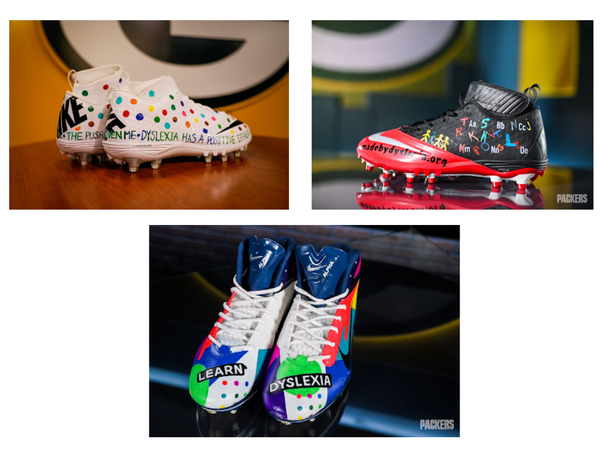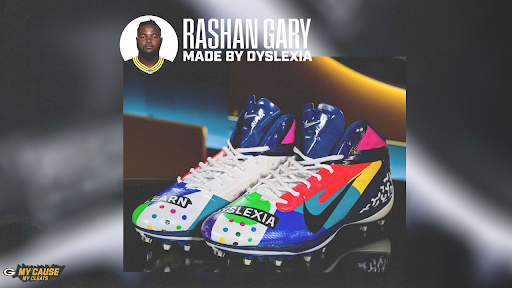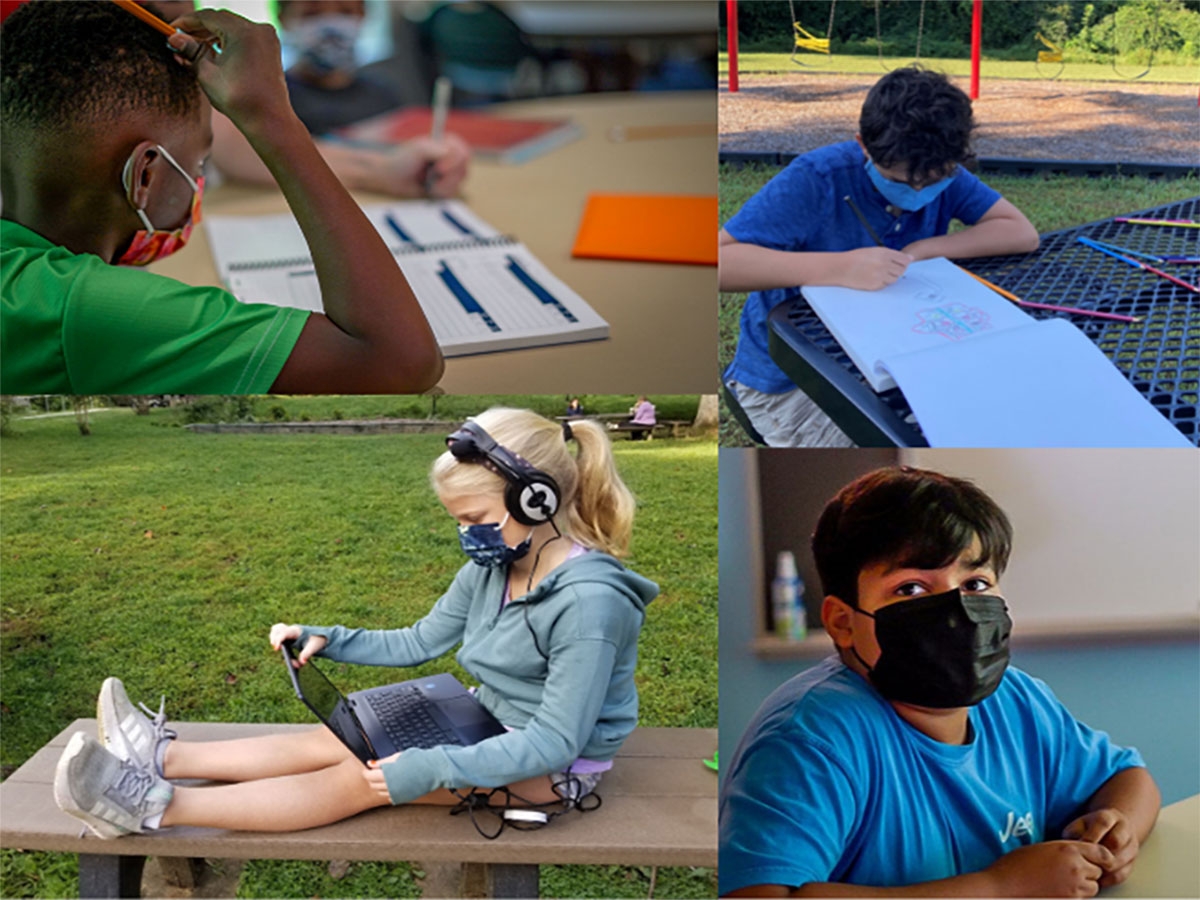Empowering students with language-based learning differences

Siena Blog



The Siena School Blog
Discover, Learn, Celebrate, and Empower
Welcome to Siena's blog, your source for helpful, cutting-edge resources tailored to teachers, parents, and other advocates in the learning differences community. We are dedicated to providing a wealth of curated knowledge spanning various topics, ranging from dyslexia advocacy and awareness to classroom teaching strategies, heritage month profiles, and social and emotional health.
Discover innovative classroom strategies that inspire creativity and foster a love of learning.
Our commitment to social-emotional wellness ensures that we provide valuable insights into healthy student development and self-advocacy.
Discover resources, reading and podcast recommendations, volunteering opportunities, and more for parents in the LD community.
Our important heritage month posts highlight key people, offer reading and podcast recommendations, and more.
Spotlight on WNBA Dyslexia Advocacy: A’ja Wilson and Jewell Loyd

Avg. read time: 3 min.
Women’s History Month 2023
To commemorate Women’s History Month 2023, Siena is honoring WNBA stars Jewell Loyd and A’ja Wilson for their work and advocacy related to dyslexia.
The National Women’s History Alliance chose the theme of Women’s History Month 2023 as Celebrating Women Who Tell Our Stories, highlighting those “who have been active in all forms of media and storytelling including print, radio, TV, stage, screen, blogs, podcasts, news, and social media.” In telling their stories of dyslexia and advocacy off the court, Loyd and Wilson have worked for causes related to education, learning differences, girls’ and women’s basketball, and more.
WNBA Dyslexia Advocacy
Loyd’s and Wilson’s career paths have been quite parallel: both have played in NCAA Women’s Championship games, both were #1 overall WNBA draft picks, and both were Rookies of the Year (Loyd in 2015, Wilson in 2018). Between them, they have 3 WNBA championships (Loyd in 2018 and 2020, Wilson in 2022). They’ve also been teammates several times, winning gold at the 2020 Tokyo Olympics and at the FIBA Women's Basketball World Cup in 2018 and 2022.
A guard for the Seattle Storm since she was drafted first overall in 2015, Jewell Loyd has done a lot of strong advocacy and community work stemming from her learning differences. In 2015 right before the WNBA draft, Loyd wrote about her dyslexia journey for The Players' Tribune:
After being diagnosed [as an adolescent], it took time to figure out what worked for me, but I did. And if I close my eyes right now, I can see the back of my future jersey: Loyd. I won’t know what the front will say for another few hours, but the title I want to carry above all others? Role model.
Basketball was, for Loyd, a “sanctuary” while she was in school, and she applied the same determination and focus she needed on the court to her studies and adjustment to her learning needs.
Loyd’s dyslexia advocacy and role modeling were writ large—literally—in 2016. She was featured in an interactive, three-panel billboard in New York as an Honorary Diplomat for Eye to Eye, a nonprofit mentoring program in which elementary and middle school students with learning differences work with high school or college students with learning differences.
See the video of the billboard here.
During Women’s History Month 2022, Loyd partnered with 94 Feet of Game and We The Best Foundation for the Future of Basketball Is Female campaign, helping provide 1,000 scholarships for female basketball players, along with access to foundational basketball skills.
A fellow WNBA role model and dyslexia advocate, A’ja Wilson has been a forward for the Las Vegas Aces since being drafted in 2018. She wrote about her dyslexia journey for The Players’ Tribune in 2018, sharing that she actively sought accommodations when starting at the University of South Carolina:
Before school started I sat down with my parents and an academic advisor from South Carolina, and we decided that every professor should know about my dyslexia.
I never had to just go up to Coach [Dawn Staley] and tell her. But she knew, even before the recruiting process had ended. Freshman year, it was kept pretty quiet. I was doing all right in college thanks to having better resources—and honestly being able to record lectures instead of having to write everything down. That helped a lot.
Wilson later cofounded the A’ja Wilson Foundation with her parents. Through her foundation and public presence as a WNBA star, Wilson supports children with dyslexia and their families to, according to their mission statement, “empower them to reach their full potential through educational programming, workshops, camps and grant opportunities.”
Moreover, the A’ja Wilson Foundation does a lot of work to prevent bullying of students who learn differently through education and mentoring programs. Learn more about the A’Ja Wilson Foundation’s recent work on their Twitter, Instagram, and Facebook channels, especially under the hashtags #SpeakUp, #ChooseKindness, #DyslexiaAwareness, and #PowerToEmpower.
In using their public visibility as professional athletes and role models, Loyd and Wilson continue to advocate for dyslexia awareness and support to help students across the country.
Additional Links and Resources
Learn more about them here:
- “Jewell Loyd Talks about the WNBA Draft, Being Dyslexic and Finding Comfort in Basketball” (SB Nation, 2015)
- “Niles West Product and WNBA Champion Jewell Loyd Never Let Dyslexia Define Her” (Chicago Sun-Times, 2019)
- “The Incomparable Journey of Jewell Loyd” (Sports Illustrated, 2020)
- “How Jewell Loyd is Giving Back to Chicago and Inspiring the Next Generation of Female Hoopers” (Slam, 2022)
- “How Team USA's A'ja Wilson is Using Her Own Life Experiences to Support Others in Similar Situations” (IOC, 2021)
- “South Carolina’s A’ja Wilson Opens Up About Her Struggle with Dyslexia” (Slam, 2018)
See The Siena School blog for other heritage month spotlights related to our innovative dyslexia education, including NFL linebacker Rashan Gary, writer and activist Victor Villaseñor, poet Amanda Gorman, figure skater Meryl Davis, film director Ann Hu, and astrophysicist Dr. Maggie Aderin-Pocock. See also this 2021 blog post on dyslexia awareness and advocacy at Siena.
Siena’s mission-focused innovative dyslexia education is designed for students in grades 3-12 with language-based learning differences on campuses in Silver Spring, Maryland, and Oakton, Virginia.
Spotlight on the NFL's Rashan Gary

Avg. read time: 3 min.
“I teamed up with Made By Dyslexia to advocate for those who think differently.” —Rashan Gary
Black History Month 2023
To commemorate Black History Month 2023 and the importance of strong advocacy and raising awareness of what dyslexia is, Siena is honoring Green Bay Packers linebacker Rashan Gary for his dedicated dyslexia advocacy.
Gary was born in northern New Jersey in 1997 and attended college at the University of Michigan from 2016 to 2018. He was diagnosed with dyslexia in middle school, sharing in 2021 that “it’s not going to affect me because it’s my superpower. So that’s why I challenge anybody with dyslexia to keep pushing forward and keep chipping away.”
Gary regularly uses his platform as a professional athlete to be the kind of role model he didn’t have growing up. He’s strongly dedicated to “raising awareness about dyslexia and advocating for educator awareness and the critical screening resources are important to me,” as he shared in a recent Instagram post.
Rashan Gary’s Dyslexia Advocacy
Since 2020, Gary has used the NFL’s My Cause My Cleats program to raise awareness for Made By Dyslexia. As the NFL shared in this press release, “Players combine forces with artists and cleat manufacturers each year to create these custom-designed cleats that showcase their causes in a way that resonates personally to the player, their fans and the cause.”

My Cause My Cleats enables players to support causes important to them through one-of-a-kind, hand-painted cleats to wear in a regular season game on a particular week. The cleats are later auctioned off for charity.
Laura Haas, who designed Gary’s cleats for 2022, shared that her own neurodivergent thinking is “kind of my superpower,” and she wanted to highlight “joy and individuality” in her design. (See here for the Instagram post.) Gary’s cleats from 2020 and 2021 likewise highlighted how his dyslexia is a strength for him, as well as how the dyslexic brain might see and process information.
- Watch the NFL’s 2022 ad featuring Rashan Gary here.
- See here for a photo gallery of Gary’s 2022 cleats.
- See here for Gary’s video from 2021 about his cleats.
Additional Links and Resources
Gary has been a visible public figure since he was a nationally recognized high school football player. He understands how important it is to use his platform to advocate for dyslexia awareness and support. Gary has also worked with the Michigan Dyslexia Institute to talk about his journey and inspire others to see superpowers, creativity, and perseverance within themselves.

Other NFL players with dyslexia have raised awareness through My Cause My Cleats, such as Spencer Drango of the Cleveland Browns, Lawrence Guy of the New England Patriots, and Max Scharping of the Cincinnati Bengals.
The Siena School blog has other heritage month spotlights related to innovative dyslexia education, including writer and activist Victor Villaseñor, poet Amanda Gorman, figure skater Meryl Davis, film director Ann Hu, and astrophysicist Dr. Maggie Aderin-Pocock. See also this 2021 blog post on dyslexia awareness and advocacy at Siena.
Learn more about Siena’s commitments and ongoing initiatives for Diversity, Equity, Inclusion, and Belonging.
The Siena School proudly serves students with dyslexia and other language-based learning differences in grades 3-12 on campuses in Silver Spring, Maryland, and Oakton, Virginia.
“Be the BEST version of you that you can be. No one will ever do it better. We have dyslexia, and we can accomplish ANYTHING we put our minds to.” —Rashan Gary
Lessons in Dyslexia Advocacy from Siena Alumni

Avg. read time: 3 min.
There are certain challenges that come with being a student with dyslexia. There are also challenges to being a new student. The reason I can relate to what current students are doing/thinking/feeling is because I did it/thought it/felt it all too. —Meribor Matusow (Siena ‘18), Events Coordinator
As part of Dyslexia Awareness Month, Siena is again reflecting on the strategies we regularly adopt to support our students’ different learning styles.
Students at both our Silver Spring and Northern Virginia campuses have access to models of success and resources every day to enhance their learning and dyslexia advocacy, such as daily slides highlighting notable people with dyslexia, assistive technology, and a regular emphasis on self-advocacy.
A relatively new model of success that Siena students have access to is Siena alumni who’ve returned to the community as paraeducators or staff. There are currently four alumni who work regularly at Siena: Perry Singletary (Class of 2011) and Ryan Salomon (Class of 2012) are paraeducators at Siena Silver Spring, Brandon Butsavage (Class of 2016) is Office Manager at Siena Northern Virginia, and Meribor Matusow (Class of 2018) is Events Coordinator at Siena Silver Spring.
In making the transition from Siena students to Siena staff, these alumni regularly model success for students while also providing an additional layer of understanding as former students.
Dyslexia Accommodations for Students
Siena is there to provide a mentor-mentee relationship where it’s tailored toward the needs of the student and their learning differences. I know that personally because it was 9 years as a student for me. —Brandon Butsavage (Siena ‘16), Office Manager
A particular benefit of alumni working at Siena is that they can see aspects of themselves in current students. “Every student reminds me either of a classmate or of myself,” Brandon Butsavage recently shared, underscoring the unique perspective that Siena alumni bring to their interactions with current students.
Paraeducator Ryan Salomon has applied his experience as a Siena student to his current work in the classroom and in after school. “I understand how Siena teaches and how our students learn best,” he shared. Salomon credits his awareness of how to keep students engaged and focused to his years as a Siena student who had to learn how to do the same. When helping elementary students with their homework during after school, for example, Salomon has applied some methods for spelling and sounding out words that he learned as a student.
Similarly, Perry Singletary recently gave elementary student Grayer a lesson in discovering how he learns best in math class. Having worked with elementary students in previous jobs, Singletary is now a paraeducator with Siena’s elementary team. When Grayer couldn’t quite figure out an addition problem in Prodigy, Singletary shared, “I realized how I could help him through the process because he was doing something similar to what I did as a student—and still do now.”
Instead of trying to do the math problem horizontally on the laptop screen, Singletary rewrote the problem vertically on a whiteboard to show Grayer a different way of seeing—and then solving—it that worked for him. Once they worked together to break down the problem on the whiteboard, Grayer went back to Prodigy to enter the solution.
Using a multisensory accommodation helped Singletary lead Grayer through the mathematical process because the same approach has worked for her in the past.
Dyslexia Advocacy for Students
Recently, Singletary also helped give 4th grader Sofia a lesson in self-advocacy. Sofia was hesitant to ask questions in class because she was worried about being wrong or being the only student who didn’t know the answer. “I reminded her that no question is a bad question—especially at a school like Siena,” Singletary noted.
In this video about his own dyslexia advocacy, alumnus Partha Roy (Siena ‘18) shares how he applied the tools he learned as a Siena student while he was in college. (Roy recently graduated magna cum laude from Eastern Mennonite University.)
Like Roy, Meribor Matusow has continued to apply the lessons in self-advocacy she learned as a student. “Modeling success as someone with dyslexia isn’t about how fast/well I can read and write now,” she shared. “It’s about being able to go into life as an adult and find or create accommodations that I need to be successful.”
Resources for Dyslexia Advocacy and Accommodations
As Siena staff members, these four Siena alumni regularly teach students lessons in accommodations and self-advocacy, as well as model success for life after graduation.
This blog post on dyslexia advocacy and accommodations from Dyslexia Awareness Month 2021 highlights the assistive tools, support networks, and principles of self-advocacy students have access to. Learn more about self-advocacy at Siena and Siena’s alumni community on our website.
Siena’s mission-focused innovative dyslexia education is designed for students in grades 3-12 with language-based learning differences on campuses in Silver Spring, Maryland, and Oakton, Virginia.
Dyslexia Advocacy and Accommodations

“I have a planner that I use. I still use my Siena color-coding skills. That has really been pushing me through all of my years—both at Siena and at college.” —Siena Alumnus
How do Siena students learn the skills necessary for them to succeed both at Siena and in college?
Through accommodations, through adaptation, and through self-advocacy each and every day.
Since October is Dyslexia Awareness Month, it’s the perfect time to reflect on the strategies that Siena regularly adopts to support our students’ different learning styles. At both our Silver Spring and Northern Virginia campuses, students have ample opportunities to self-advocate and seek the accommodations that best meet their individual needs.
Advocates and Advocacy at Siena
Advocacy and adaptation on students’ behalf is central to what Siena does every day:
- Students self-advocate by understanding their personal learning methods and needs, as well as by working with their teachers to succeed and, if necessary, make adjustments.
- Teachers advocate by having an open line of communication with students and parents and sharing what they’re noticing at school (both academically and socially–emotionally).
- Parents advocate by both promoting student self-advocacy at home and staying in contact with teachers about their students’ progress and needs.
From the beginning, Siena students are introduced to their accommodations and the reasons we use them. The students also trial different classroom supports and learn what works best, among them:
- flexible seating options (e.g., a standing desk)
- color strips
- fidgets (to help them focus)
- different pencil grips
- color-coding (good for particularly visual learners)
Siena students learn how to be active advocates, from requesting feedback on written assignments early in the process or seeking extra guidance to having a teacher act as a scribe to help them get their thoughts on paper.
The elementary team uses sentence starters to guide students if they need extra help or clarification during class. These are posted in the classroom as a visual reminder of how students can best ask for what they need.

As students move through Siena’s academic grade divisions, they gradually become more independent in handling their assignments, deadlines, and overall learning conditions.
The advocacy lessons don’t stop when students graduate. A Siena alumnus who’s now a senior in college has learned the importance of talking with his professors and other support staff about accommodations because of how he was taught and practiced using them while attending Siena: “Get out there, talk to your professors, and be yourself,” he shared. “That’s how you can succeed.”
Resources Used in Siena Classes
In tandem with regular student-centered advocacy, Siena encourages students to use appropriate methods and resources to enhance their learning. For example, the Siena Planner helps students with organizing and executive functioning. It has both immediate and long-term benefits: it helps students learn how to regulate their homework and study schedules, as well as provides a tool to bring with them when they graduate.
“I still use a planner [in college]. It’s not exactly like Siena’s but it has everything in it. My planner is my life. Color-coding is huge.” —Siena Alumnus
In addition to print and physical accommodations, assistive technology is integrated into students’ daily lives, through such tools and resources as:
- Individual, school-issued Chromebooks (including a suite of Chrome extensions like Mercury Reader, Speech to Text, and Read & Write)
- Learning Ally
- Mindomo
There are also class-specific resources for math, reading, and other subjects. (See how our math team has adapted the curriculum to help students with dyscalculia.)
Additional Resources for Students and Families
Siena sets students up for success both in their time here and in their lives after by equipping them with useful tools and a willingness to self-advocate. In the process, students learn the skills they need outside the content-area knowledge they get in class:
Such a student-centered approach to learning helps Siena students maximize their potential for success—both as students and as alumni.
Visit our website to learn more about Siena’s individualized instruction and emphasis on self-advocacy and executive functioning. And, see our previous blog post for links to resources in the DC Metro area, including WISER and Decoding Dyslexia Maryland.
